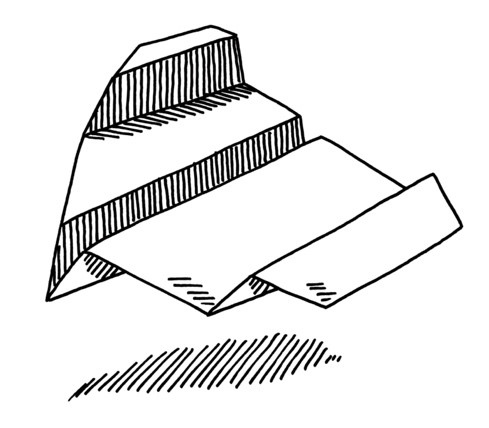The poetry of science
Poetry in Three Dimensions
Science and Children—September/October 2021 (Volume 59, Issue 1)
By Sylvia Vardell and Janet Wong

Paper Airplanes
by Janet Wong
Each team in our class has twenty minutes
to make a paper plane that can fly the farthest.
One sheet of paper per plane.
No other stuff.
Five pieces of paper per team for models.
Each team works in a separate area. No spies.
We brainstorm.
Short and wide or long and thin?
Wing tips up or down or flat?
Pointed nose or squared off?
We make five models and test them all.
With one minute to choose our favorite,
our best plane flies straight into a wall
on its third test flight at the very same time
that our principal walks through the hallway
and steps on it. Crunch!
It is broken beyond repair.
Glenn crumples it into a ball and throws it.
It goes farther than anything else we made.
We have ten seconds left when—ding dong!—
a question pops into our minds.
A stupid question?
Maybe. But we run to ask our teacher anyway:
Does it have to look like a regular plane?
Kids laugh when they see our ball-plane.
But no one laughs when we jump and shout:
We won! We won!! We won!!!
Poem © 2014 Janet S. Wong from The Poetry Friday Anthology for Science by Sylvia Vardell and Janet S. Wong © 2014 Pomelo Books; illustration by Frank Ramspott from The Poetry of Science: The Poetry Friday Anthology for Science for Kids © 2015 Pomelo Books.
Take 5!
- Read this poem aloud with a pause between each stanza. Then, ball up a piece of paper at the end and toss it across the room!
- Share the poem again, and invite students to join in on the last, exclamatory line, We won! We won!! We won!!!
- Work together to investigate science competitions that students might consider participating in. One helpful resource is “The Big List of Student Contests and Competitions” (Online Resources).
- Use this poem to talk about how scientists often repeat investigations to increase the reliability of results and sometimes use creative thinking and innovative processes to solve a tricky problem. Challenge students to identify each step using examples from the poem.
- Link this poem with another poem that poses many questions, “Inquiry” by Cynthia Cotten (Online Resources), or seek out more airplane poems in Skywriting: Poems to Fly by J. Patrick Lewis (Resources). For directions on making a variety of paper airplanes, consult the classic The Paper Airplane Book (Resources).
Reference
Wong, J. 2014. “Paper Airplanes” in The Poetry Friday Anthology for Science, eds. S. Vardell and J. Wong, 231. Princeton, NJ: Pomelo Books.
Resources
Lewis, J.P. 2010. Skywriting: Poems to fly. Minneapolis, MN: Creative Editions.
Simon, S. 1976. The paper airplane book. New York: Puffin Books.
Online Resources
Literacy Physical Science Elementary


